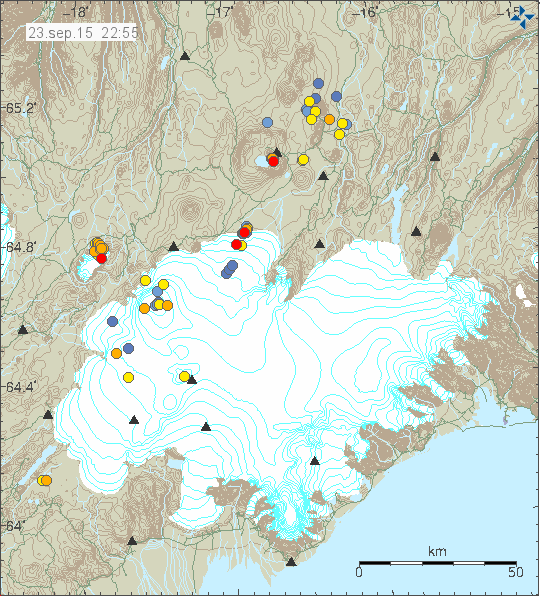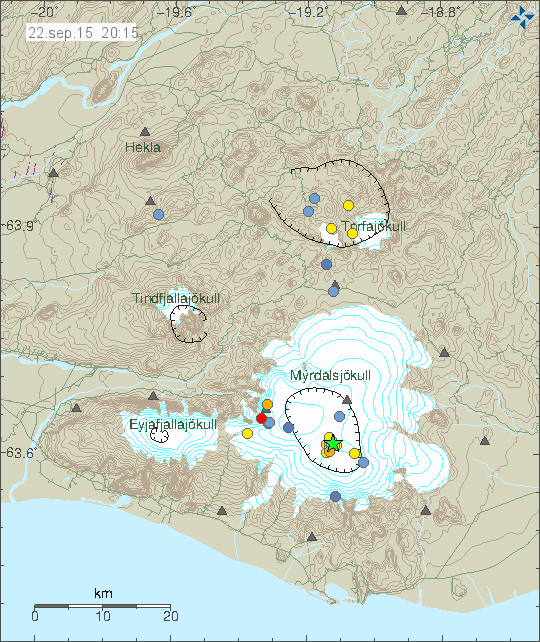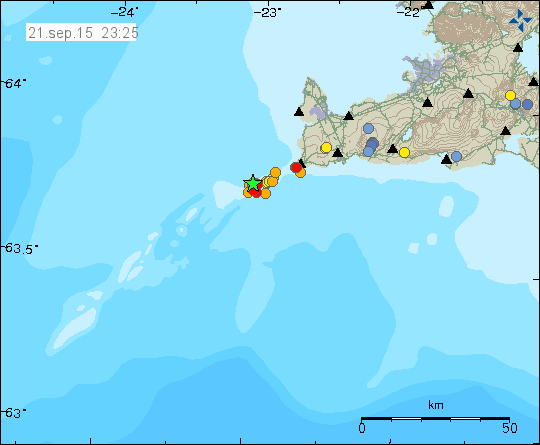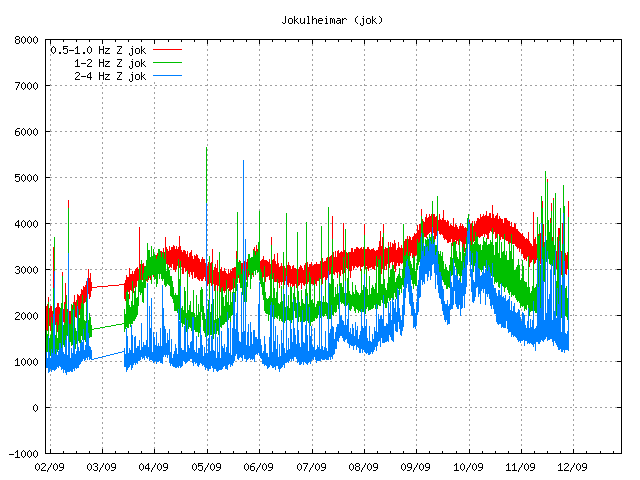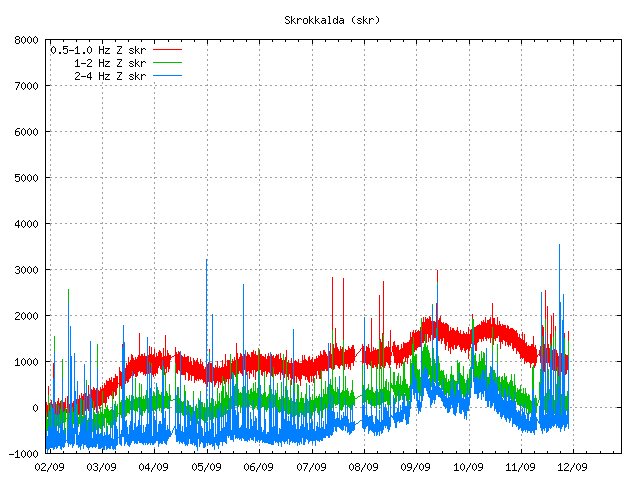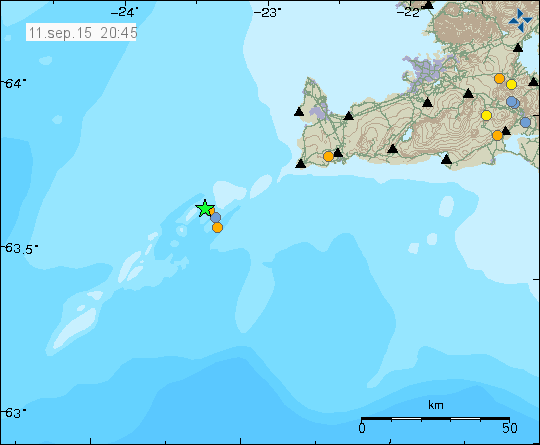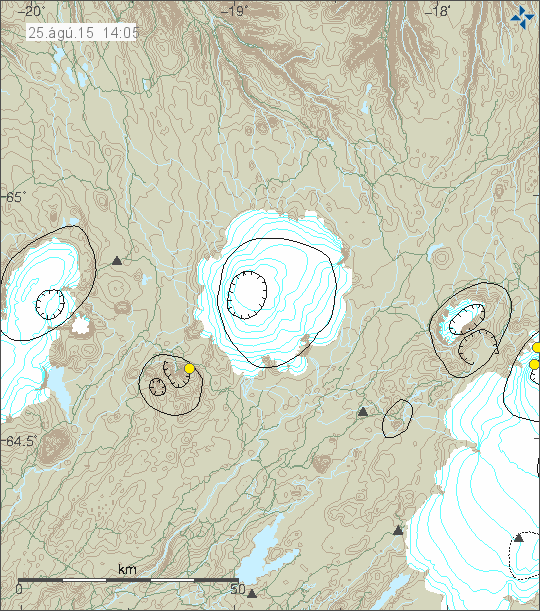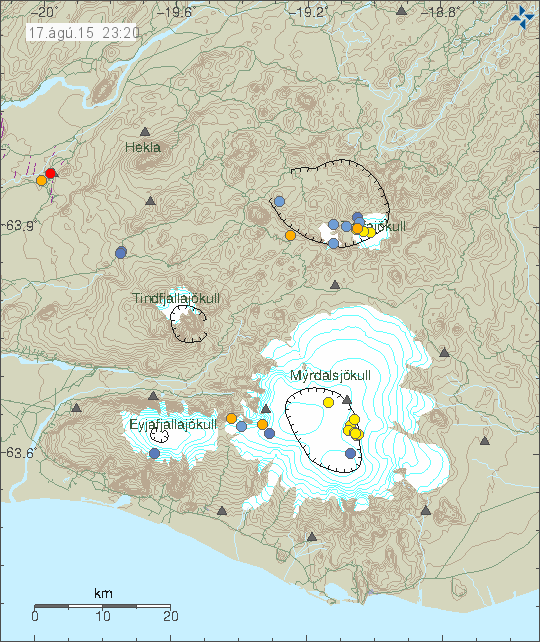One year ago activity in Bárðarbunga volcano was increasing, the week before a constant earthquake swarm had been taking place in the volcano. I had planned to write about that earthquake swarm that had been taking place, that never happened due to sudden increase in Bárðarbunga volcano the day that I had planned on writing about the earthquake swarm (I don’t have that image, I think, at least I can’t find it, I possibly did not save it due to me forgetting doing so).
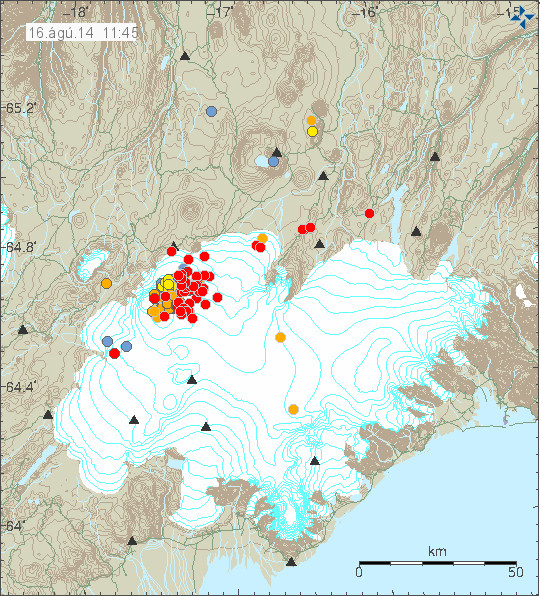
The earthquake activity in Bárðarbunga volcano at 11:45 UTC on 16-August-2014. This was just the start. Copyright of this image belongs to Icelandic Met Office.

It was clear that on 16-August-2014 that something was going on when I looked at the harmonic tremor plot at Iceland Met Office website. It was going crazy. Copyright of this image belongs to Icelandic Met Office.
It was clear when looking at the harmonic tremor plot that something was going on and what was happening was big.
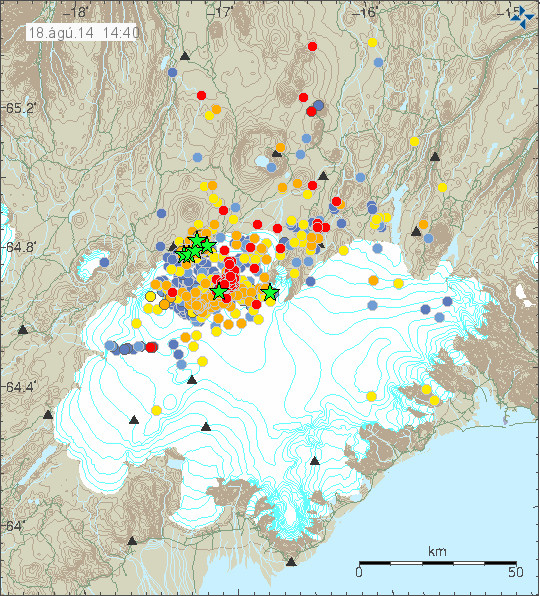
Green stars numbers increased as the time passed on the map, so did the magnitude and number of the earthquakes in Bárðarbunga volcano. Copyright of this image belongs to Icelandic Met Office.
When 25-August-2014 came the number of earthquakes taking place in Bárðarbunga volcano was in the thousands and earthquakes with magnitude 3,0 and larger was in the hundreds.
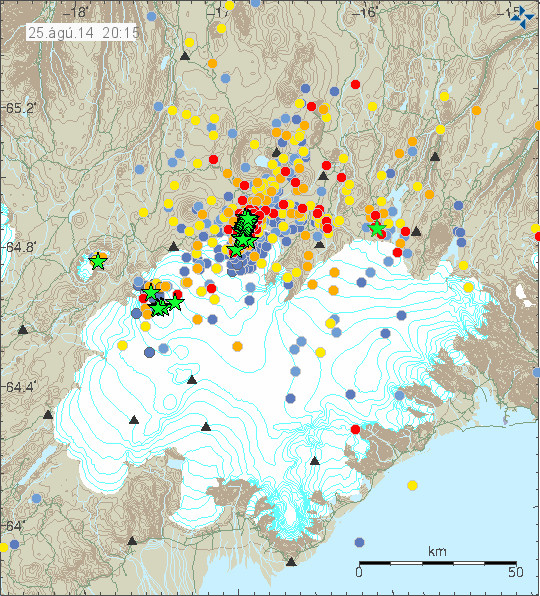
Earthquake activity in Bárðarbunga volcano on 25-August-2015. Copyright of this image belongs to Icelandic Met Office.
The largest earthquake that happened before the eruption started took place on 26-August-2014, it had the magnitude of 5,7 and is the largest earthquake in Iceland since 2008.
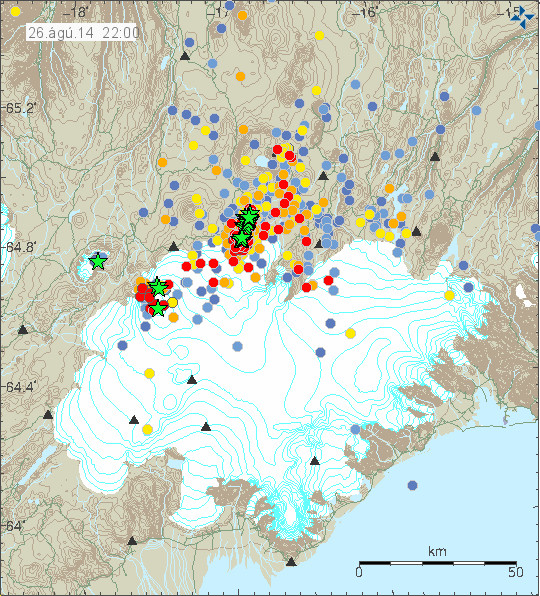
The earthquake activity in Bárðarbunga volcano on 26-August-2015. Copyright of this image belongs to Icelandic Met Office.

The magnitude 5,7 earthquake on my geophone in Böðvarshólar. This image is under Creative Commons License. Please see CC license page for more details.
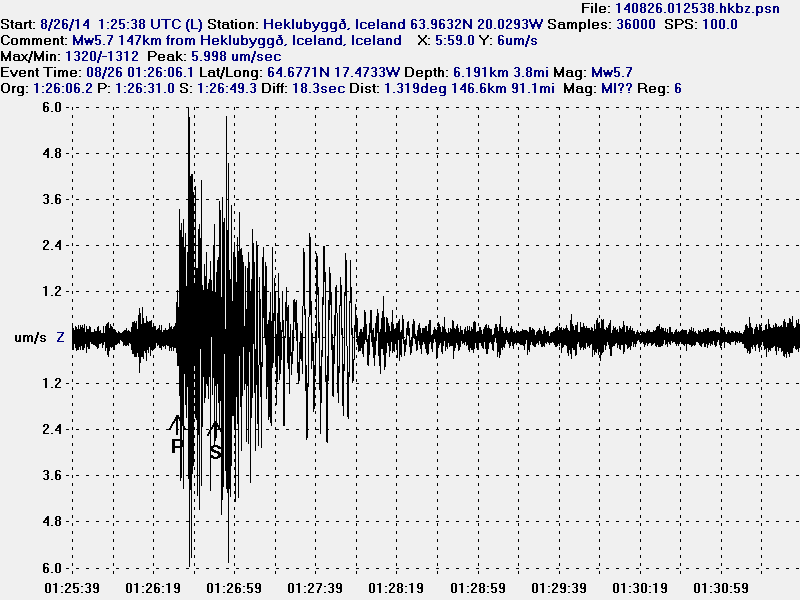
The magnitude 5,7 earthquake on my geophone in Heklubyggð. This image is under Creative Commons License. Please see CC license page for more details.
Once the eruption started in Bárðarbunga volcano by the end of August-2014 most of the earthquake activity stopped, it did continue with one to three magnitude five or larger earthquakes in Bárðarbung volcano caldera as it collapsed due the magma outflow in Holuhraun eruption area. That earthquake activity continued until end of February, when the eruption was just about the end in Holuhraun.
Early signs of what was about to happen in Bárðarbunga volcano
It is difficult to know for sure what are the early signs in Bárðarbunga volcano until after an eruption has started. One of the few clues that I know about was earthquake activity like this one. It was considered a normal earthquake activity for Bárðarbunga volcano, there is a good chance that it was a activity telling scientist that Bárðarbunga volcano was about to erupt soon.

Earthquake activity in Bárðarbunga volcano on 16-May-2014. Copyright of this image belongs to Icelandic Met Office.
It is difficult at best to know if an volcano is about to erupt or not. Clues are also difficult to see since the process of why and how eruption happens is often hard to see when data is missing, as is the case with volcanoes with long period of quiet.
Status of Bárðarbunga volcano at the moment
Currently there isn’t a lot happening in Bárðarbunga volcano. However, based on earlier historical record it is clear that current eruption activity in Bárðarbunga volcano is possibly not over yet. There is a good chance of new eruptions over the next time period of 10 – 15 years. The time between eruptions is everything from 1 year and up to 10 years (about). Quiet period in Bárðarbunga volcano can last up to 100 years, the current one that ended in 2014 lasted good 104 years. Where and when next eruption is going to take place in Bárðarbunga volcano is anyone guess, all that I know for sure is that it is going to happen and next eruption might be as big as the one in Holuhraun that ended six months ago.
